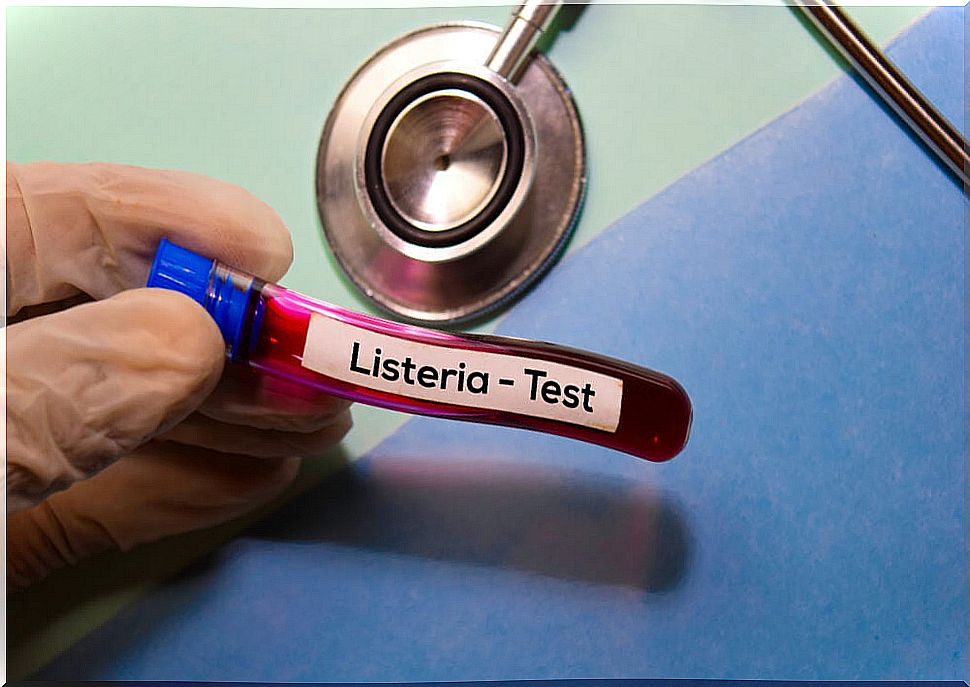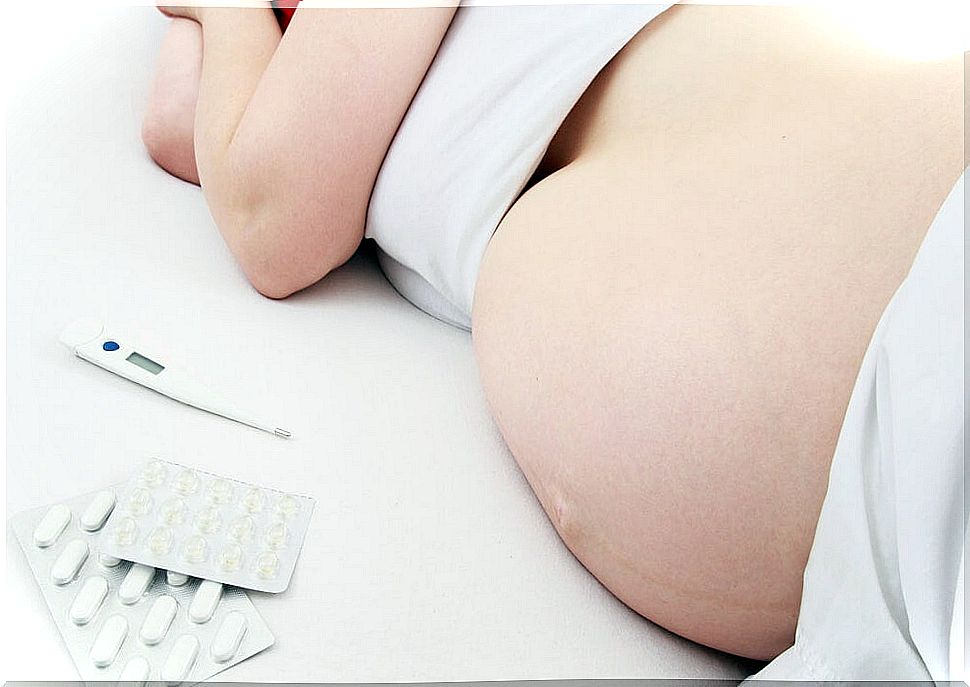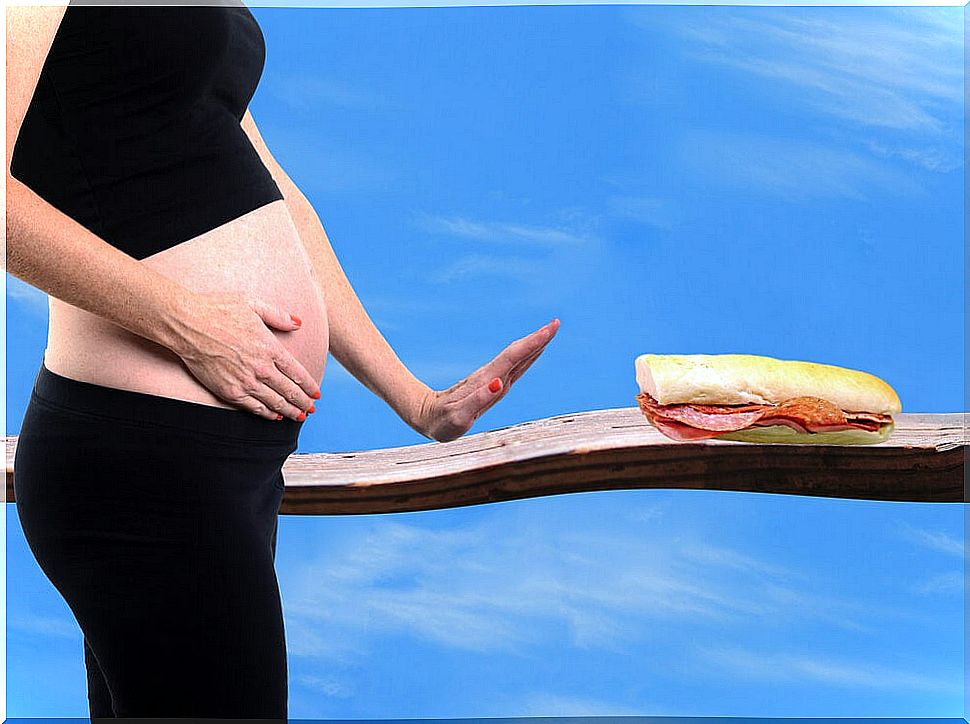Neonatal Listeriosis: A Disease To Consider

Knowing in detail the causes of neonatal listeriosis represents an essential element for prevention, as well as for early diagnosis, which can favorably affect its prognosis.
What is neonatal listeriosis and how does it occur?
Infection inside the uterus by Listeria monocytogenes that causes neonatal listeriosis can cause fetal spread with formation of granulomas that can appear in different sites, such as the skin, liver, adrenal glands, lymphatic tissue, lungs or brain.
At the same time, aspiration or swallowing of amniotic fluid or secretions from the female genital tract can cause lung infection within the uterus or perinatally, which manifests itself in the first days of life due to respiratory distress, shock and fulminant evolution.
Neonatal listeriosis signs and symptoms
Information from the Center for Disease Control, CDC, USA highlights that infections in pregnant women can be asymptomatic or characterized by a primary bacteremia that is nothing other than the presence of the bacteria in the bloodstream, and whose manifestation Initial may be that of a nonspecific flu-like illness.

In the fetus and newborn, the clinical presentation depends on the time and route of infection. Abortion, premature delivery, stillbirth, or neonatal sepsis are common. The infection can manifest within hours or days of birth (early onset) or be delayed for up to several weeks. Therefore, neonatal listeriosis is a disease to consider for its deleterious impact on health.
Newborns with early-onset disease are often underweight, have associated obstetric complications, and show signs of sepsis or generalized infection soon after birth, with circulatory or respiratory failure, or both. Newborns with the late-onset form are usually full-term, previously healthy newborns who later present with inflammation of the meninges or sepsis, or generalized infection.
To consider
- The infection can be acquired in utero or during delivery, and clinical manifestations can appear within hours or days of birth (early onset) or be delayed for up to several weeks (late onset).
- The listeriosis early-onset manifests shortly after birth as sepsis or generalized infection with circulatory failure, respiratory failure, or both.
- In the listeriosis Late-onset, previously healthy term infants may present with meningitis or sepsis.
- Culturing for L. monocytogenes – its causative agent – is essential in pregnant women with febrile illness of unknown origin.
- Treat with the corresponding antibiotics.
- Pregnant women should avoid food products that may be contaminated with L. monocytogenes .
Treatment of neonatal listeriosis
Treatment of the newborn consists of antibiotics and generally responds satisfactorily through a 14-day course of medication (21 days for meningitis), but the optimal duration is unknown.
Septic newborns, that is, with generalized infection, require other measures. In severe or severe infections, drainage and other interventions may be considered.
The essential is invisible to the eyes
To paraphrase the remarkable phrase from Saint Exupery’s The Little Prince, pregnant women should avoid food products that may be contaminated by L. monocytogenes , such as unpasteurized dairy products, soft cheeses, raw vegetables, prepared cold cuts and salads, pasta refrigerated smoked meat or seafood. Although alterations in the state of food are not always visible.
Proper food handling, in particular, separating raw meats from other items during preparation, and washing hands, utensils, and cutting boards after handling raw foods are of paramount importance,
If infection is recognized during pregnancy, prepartum or intrapartum treatment can be given to prevent vertical transmission, but the usefulness of this type of treatment has not been proven.

To consider
- The clinical manifestations of listeriosis in the neonate they are similar to those produced by other germs, their mortality being higher than in the general population (20-60%). Based on these data, neonatal listeriosis is a disease to consider.
- There are, therefore, two clinical forms of neonatal presentation : listeriosis early-onset (within two days after delivery) a septicemic disease – which is a generalized infection when the causative germ has invaded the bloodstream – with vertical transmission from mother to fetus; and late disease (five or more days after delivery) generally meningeal.
- The forms of transmission in late-onset disease are poorly understood, and may be the result of transmission during passage through the birth canal, contact with the mother during peripartum or the result of indirect nosocomial transmission with cases of disease of the birth canal. early start through people or hospital team.
- Based on the recommendations of the Centers for Disease Control and Prevention , CDC, USA, “ most people with invasive listeriosis require hospital care and approximately one in five dies from the disease. When listeriosis occurs during pregnancy, it can cause miscarriage, fetal death, or newborn death. Listeriosis during pregnancy causes fetal loss in approximately 20% of cases, and newborn death in approximately 3% ”.
More aspects to consider
- Although the in vitro sensitivity of L. monocytogenes to the action of disinfectants is well known , the persistence of the microorganism after cleaning and disinfection is a well known problem in the food industry.
- The ability to persist in equipment and facilities has been related to the ability of the bacteria to form biofilms and to tolerance phenomena to the action of disinfectants.
- On the other hand, the high infectious capacity of the bacteria, with an infectious dose of at least 100 viable bacteria in the case of risk groups, favors that it can be easily transmitted through the hands of the personnel.
- Because the listeriosis in hospitalized patients it is not of high frequency, the diagnosis is not established quickly in related cases. This, together with the fact that the disease has very long incubation periods (between 3 to 70 days), requires a high degree of alert and makes the epidemiological study difficult in the event of a possible outbreak.
Finally…
The aforementioned data oblige us to take extreme precautions from different areas and health sectors in order to avoid the acquisition of this disease in pregnant women, in the newborn both in its early and later forms.









